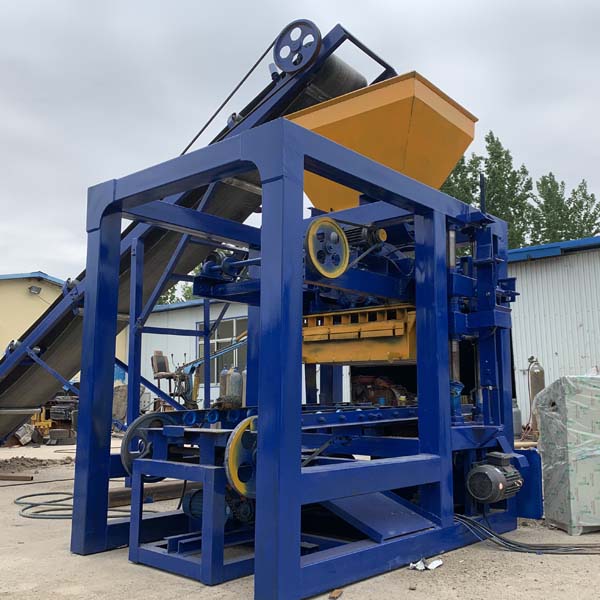
**Title: Paving the Way: Adopting a Circular Economy Model in Full-Automatic Block Production**
**Introduction**
As the construction industry seeks sustainable solutions, the adoption of a circular economy model is gaining prominence. Full-automatic block production, a key player in construction materials, can contribute significantly to a circular economy. This article explores the principles of a circular economy and outlines strategies for full-automatic block manufacturers to embrace this model, promoting resource efficiency, reducing waste, and contributing to a more sustainable future.
**1. Understanding the Circular Economy Model:**
* **Challenge:** The traditional linear economy follows a “take, make, dispose” model, leading to resource depletion and environmental degradation.
* **Strategy:** Embrace the circular economy model, which emphasizes the regenerative and restorative use of materials. In a circular economy, products are designed for longevity, materials are recycled and reused, and waste is minimized.
**2. Sustainable Material Selection:**
* **Challenge:** Traditional block production may rely on resource-intensive materials with significant environmental impact.
* **Strategy:** Explore alternative, sustainable materials for block production. Consider incorporating recycled aggregates, fly ash, or other environmentally friendly materials. Conduct life cycle assessments to determine the environmental impact of different material choices.
**3. Design for Durability and Reusability:**
* **Challenge:** In a linear economy, products are often designed with planned obsolescence, leading to premature disposal.
* **Strategy:** Design full-automatic blocks for durability, ensuring a longer lifespan. Consider modular designs that facilitate disassembly and reusability. Implement standardized dimensions to enhance compatibility with various construction projects.
**4. Closed-Loop Manufacturing Processes:**
* **Challenge:** Linear manufacturing processes often result in significant waste and inefficient resource use.
* **Strategy:** Adopt closed-loop manufacturing processes where waste is minimized, and materials are continually recycled within the production cycle. Invest in technologies that enable the efficient reuse of production waste.
**5. Recycling and Circular Supply Chains:**
* **Challenge:** Traditional supply chains may lack mechanisms for recycling and reusing materials.
* **Strategy:** Establish partnerships with suppliers committed to circular practices. Implement mechanisms for the collection and recycling of waste generated during full-automatic block production. Integrate recycled materials into the supply chain to close the loop.
**6. Extended Producer Responsibility (EPR):**
* **Challenge:** In a linear economy, responsibility for product end-of-life often falls on consumers.
* **Strategy:** Embrace extended producer responsibility by taking accountability for the entire life cycle of full-automatic blocks. Implement take-back programs, recycling initiatives, and responsible disposal practices for end-of-life products.
**7. Digitalization for Resource Optimization:**
* **Challenge:** Traditional manufacturing processes may lack the precision needed for resource optimization.
* **Strategy:** Leverage digital technologies in full-automatic block production to optimize resource use. Implement real-time monitoring, data analytics, and automation to reduce material waste, energy consumption, and improve overall efficiency.
**8. Collaboration and Industry Initiatives:**
* **Challenge:** Transitioning to a circular economy requires collective efforts and industry collaboration.
* **Strategy:** Engage with industry associations, research institutions, and governmental bodies to stay informed about circular economy initiatives. Collaborate with peers to share best practices, address common challenges, and contribute to the development of circular economy standards in the construction sector.
**Conclusion**
Adopting a circular economy model in full-automatic block production is a transformative journey that requires a holistic approach. By rethinking material choices, designing for durability and reusability, implementing closed-loop manufacturing, and embracing extended producer responsibility, full-automatic block manufacturers can play a pivotal role in advancing sustainability in the construction industry. The integration of digital technologies and collaboration with stakeholders across the supply chain will further accelerate the transition toward a circular economy, paving the way for a more resilient and environmentally responsible future.
